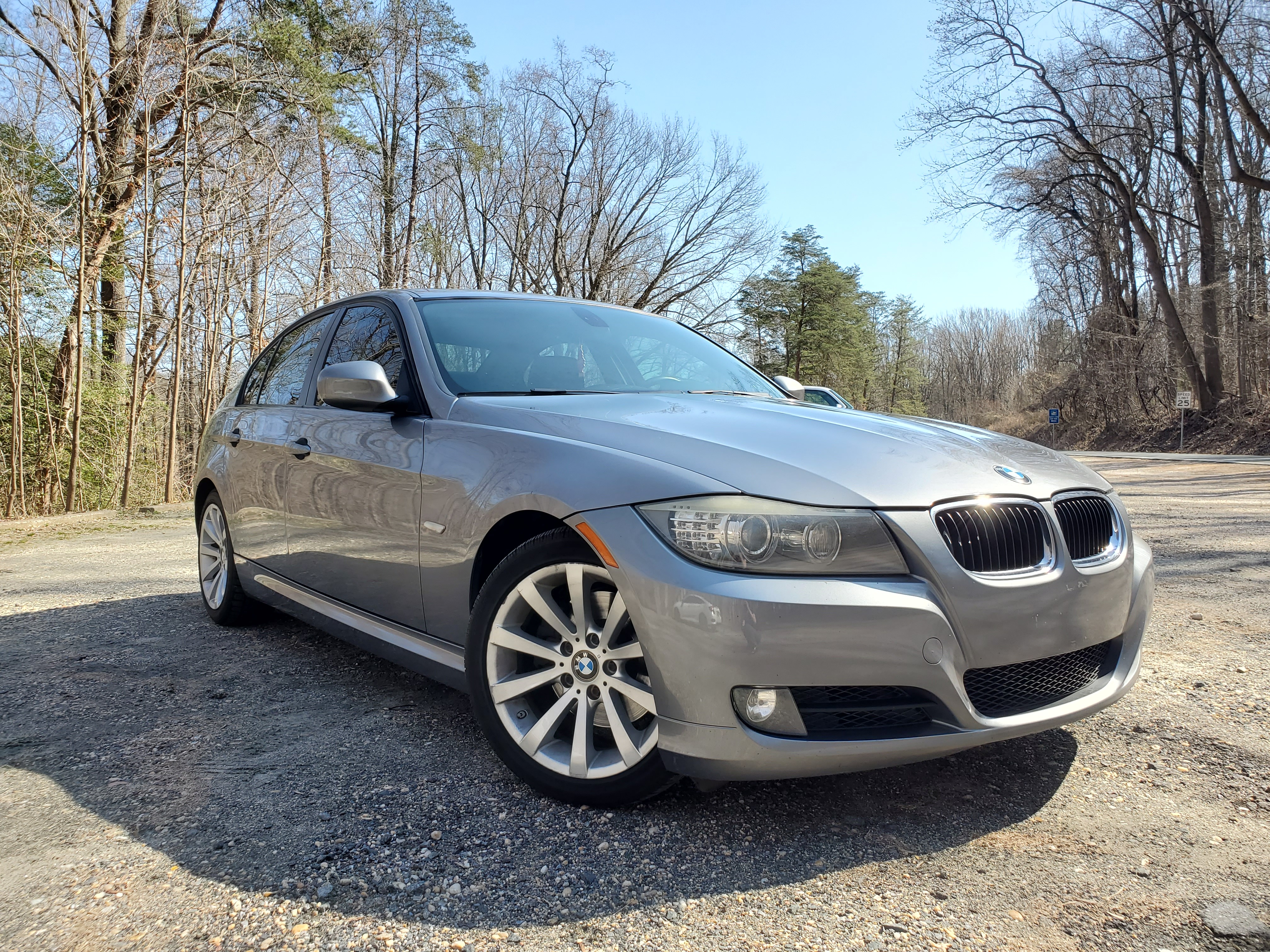
Does it live up to the legend?
The BMW 3 Series is ubiquitous today, not only in enthusiast spaces, but on the road at large. It enjoys a well-respected reputation for driving performance, as well as luxury, and the 3 Series has been emblematic of the compact executive sports sedan segment for decades. The popularity of the 3 Series, both historically and today, thusly begs examination: A car, after all, does not achieve such a reputation, such a widespread presence as the 3 Series, without selling something other cars can't offer.
Considered here is the 328i, the base model for the "E90" generation. According to goodcarbadcar.net, the 3 series sold 94,471 units in the United States for the 2011 model year, or 38% of all of BMW's US sales that year, which is an impressive feat indeed. Considering that luxury sedans live and die by their interior features, let's consider the 328i's interior first. In terms of styling, the interior generally looks clean; there are few unneccessary creases and vents, and the center stack appears surprisingly modern for a decade-old car. That modern touch is offset by expanses of dubiously authentic wood that lend a quaint, turn-of-the-century Lexus air to the car, which feels anachronistic next to the infotainment controls and all-plastic key fob. The aforementioned infotainment system is remarkably fast, intuitive, and useful for the time, and its age is truly only betrayed by the absence of "apps" and smartphone integration. Considering that few users will ever actually seek to add or remove "apps" from their car infotainment, one wonders why they would even have apps in the first place. The BMW's interface has no such illusions, and returns to a simple scroll menu, instead of a cluttered touchscreen. The multi-axis scroll wheel control is easy to use, though the audio controls feel strangely shoehorned in under the HVAC panel, which itself is wholly unremarkable. The center console is taken up almost entirely by the shifter, infotainment controls, and a large expanse of "wood," relegating cupholders to the passenger's personal space. This was likely necessitated by one of the 3 Series' greatest assets and most noticeable deficiencies: Its rear wheel drive powertrain. While full size sedans like the Dodge Charger can achieve great passenger room, they only do so by virtue of their sheer size, but a shorter, narrower, lower car like the 3 Series simply has less room to work with. Consequently, the footwells, though deep, are quite narrow, due to the transmission hump and center console. Because of the limited console space, the cupholders must be moved to above the passenger's footwell, where they can be conveniently catapulted into their lap during dynamic driving maneuvers.
Visibility is good all around, even to the rear quarters, and the infotainment system isn't terribly distracting to the driver. It should be mentioned, however, that other manufacturers, like Cadillac, had begun experimenting with breaking out infotainment functions to the instrument cluster (I distinctly remember the 2010 SRX's instrument cluster being able to display media or navigation information), while the 3 Series keeps only a rudimentary multifunction display between the gauges. The steering wheel itself is unobjectionable, if not outstanding, and it features a thankfully low button count. The seats are similarly unobjectionable: They are supportive and comfortable at all times, but only so far as that they are never noticed. Even the rear seats are soft and supportive, and BMW has somehow managed to give them reasonable legroom despite the constrained dimensions of the vehicle. Road noise is surprisingly well managed for a 2011 model, even despite the straight six's noise, and the audio system seems quite good.
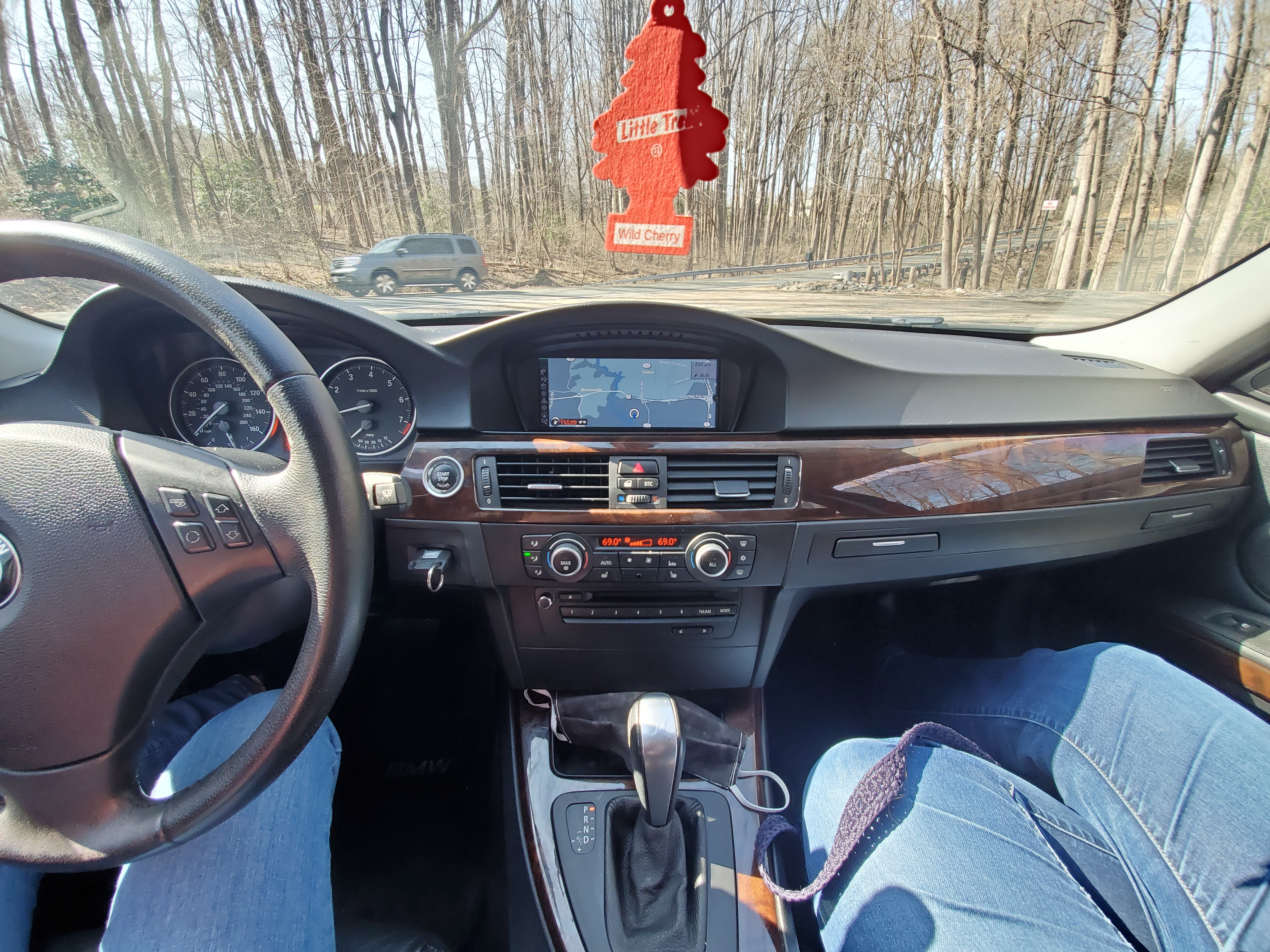
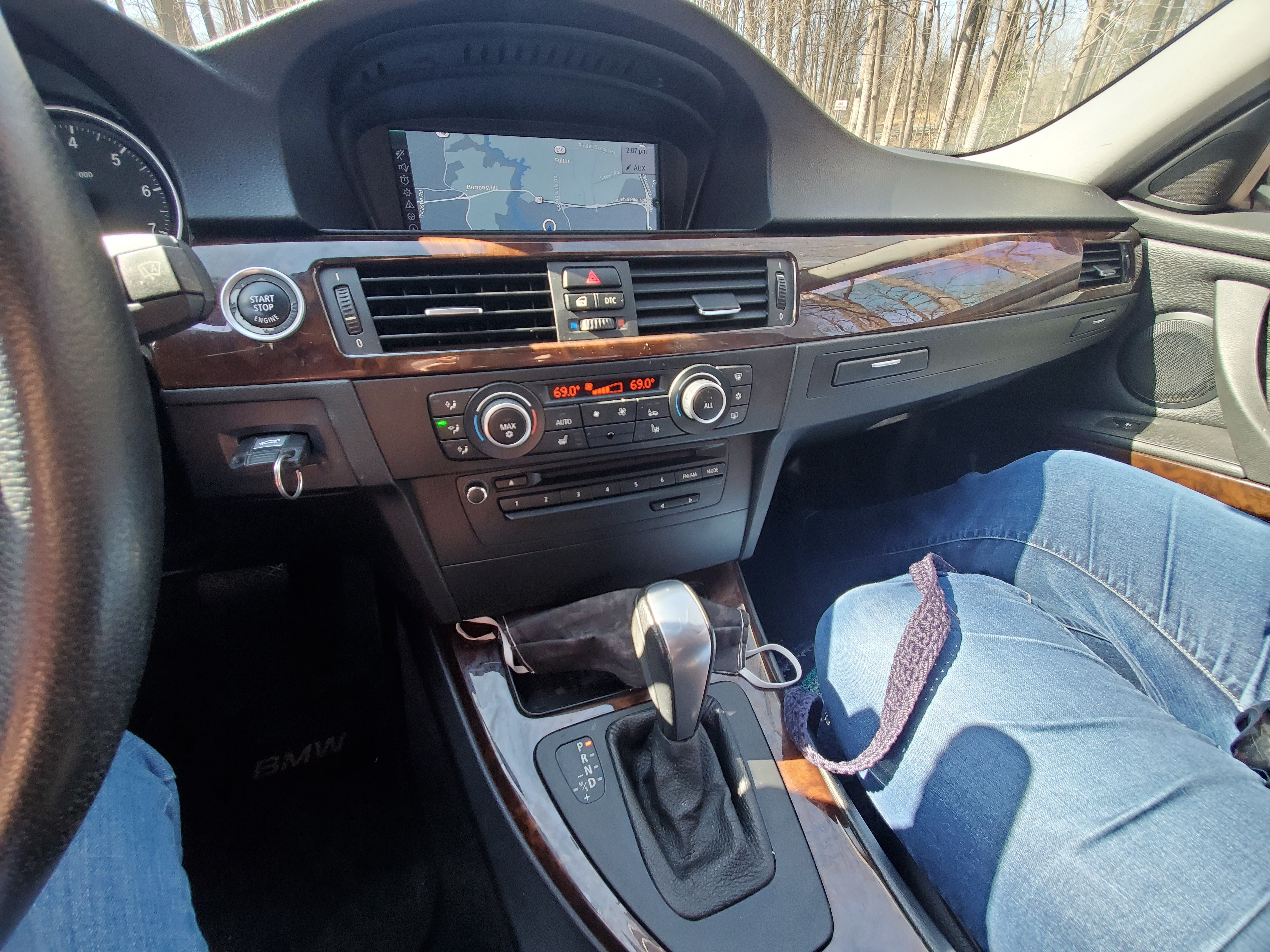
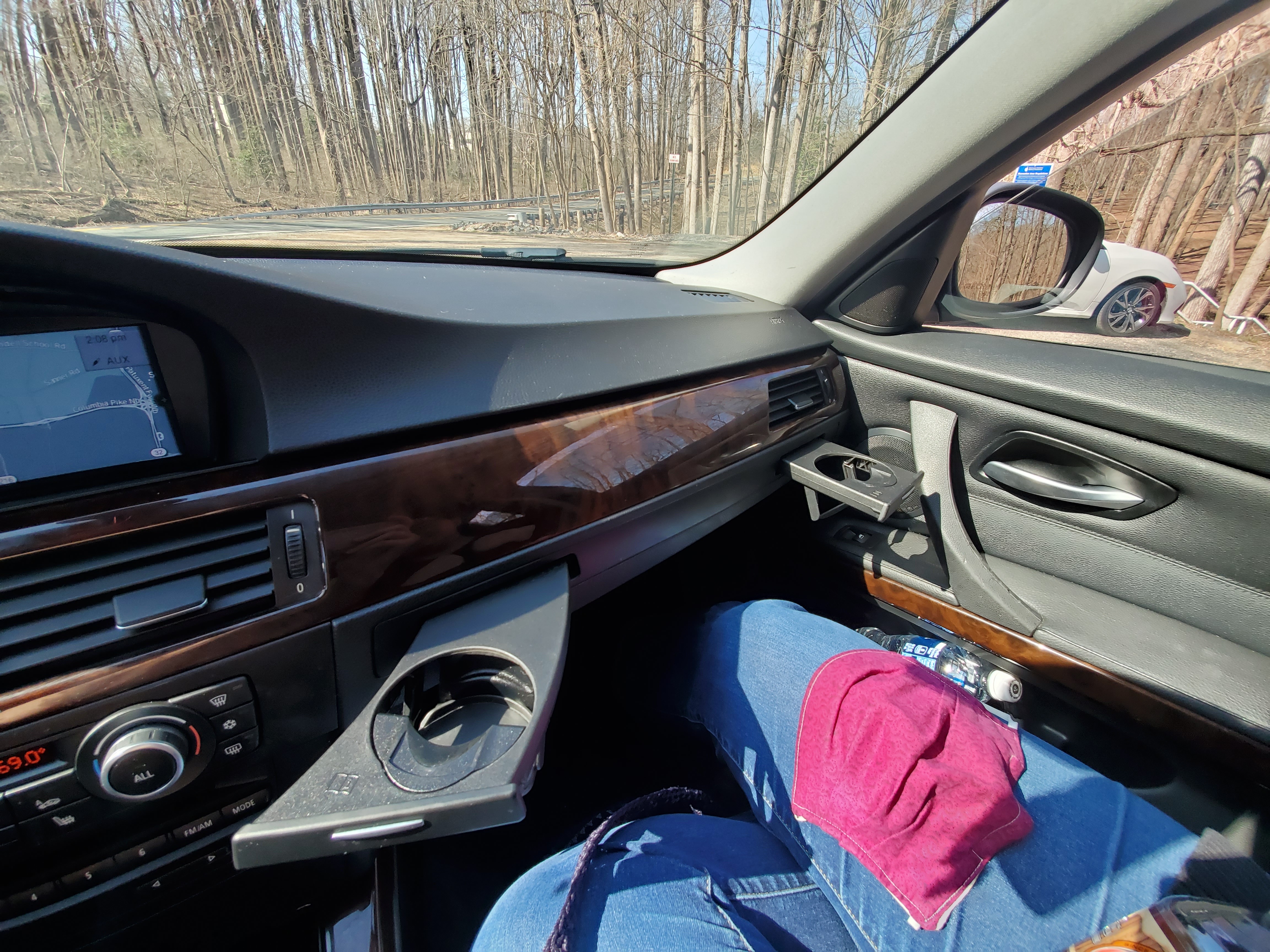
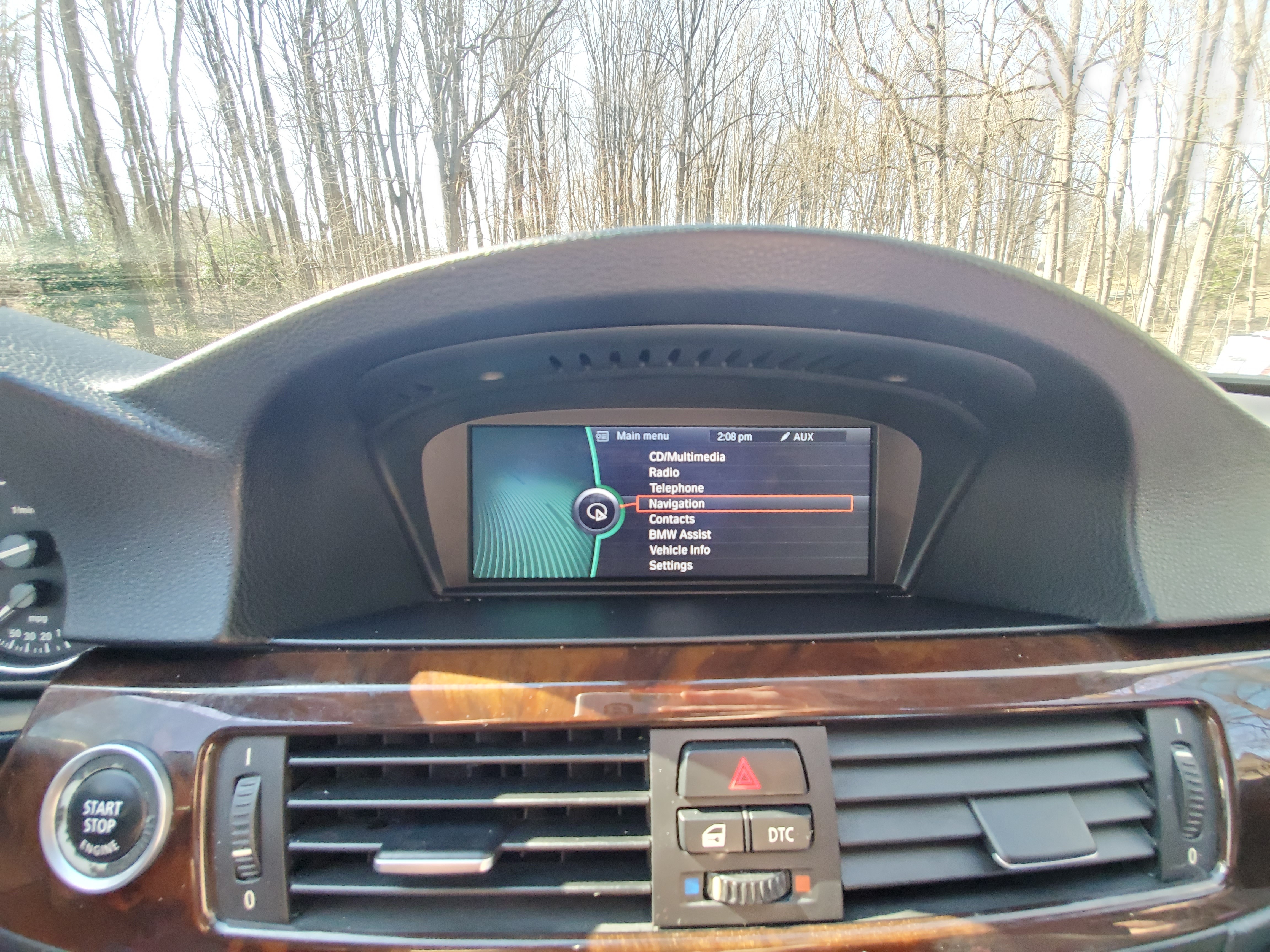
The general silhouette is typical for a 3 Series: Long hood, short rear deck, and a big passenger compartment, adding up to a car that flaunts the fact that it's rear wheel drive. The styling is a midpoint between the edgy, emotional flair of modern designs, and BMW's restrained styling treatments of the 1990s and early 2000s. This isn't a bad thing, though; Comparing the 328i to its contemporaries, its styling was surely eye-catching and unique in its day (though doesn't it seem so arrogant to say "in its day" about something a mere decade ago?) In the rear, the design is almost restrained, with the bumper bearing no cosmetic vents or diffusers, and the trunk no ostentatious lip spoiler. The taillights are quite reminiscent of modern BMWs, especially with their small reverse lamp lenses. Overall, the design wants to embody the ideal of doing more with less, though the curvy front end slightly compromises that aim. In short, this is a luxury sedan that hasn't really aged aesthetically, at least not when compared to modern designs.
We can only spend so long looking at the 3 Series, though. After all, isn't it supposed to be the "Ultimate Driving Machine?"
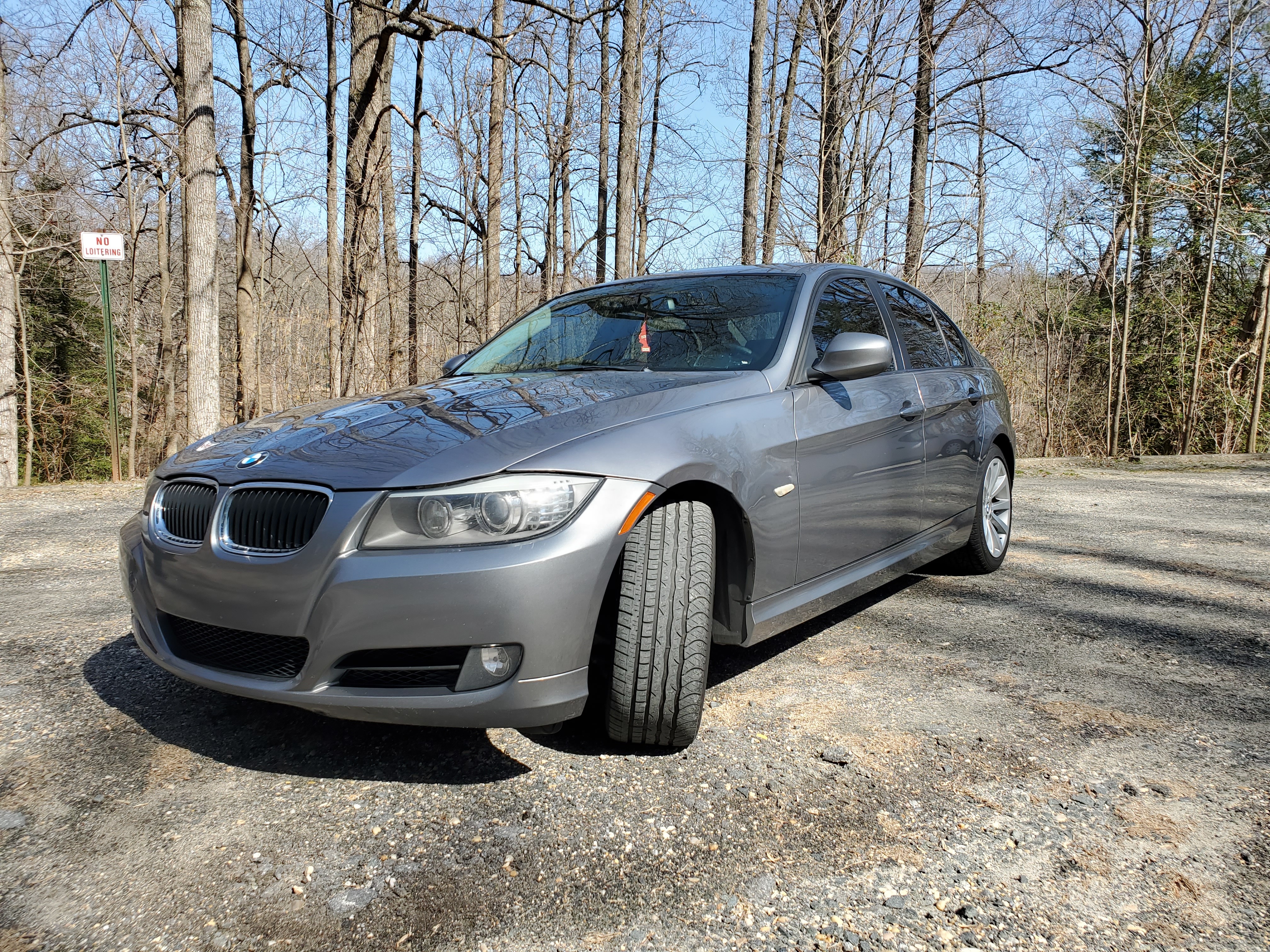
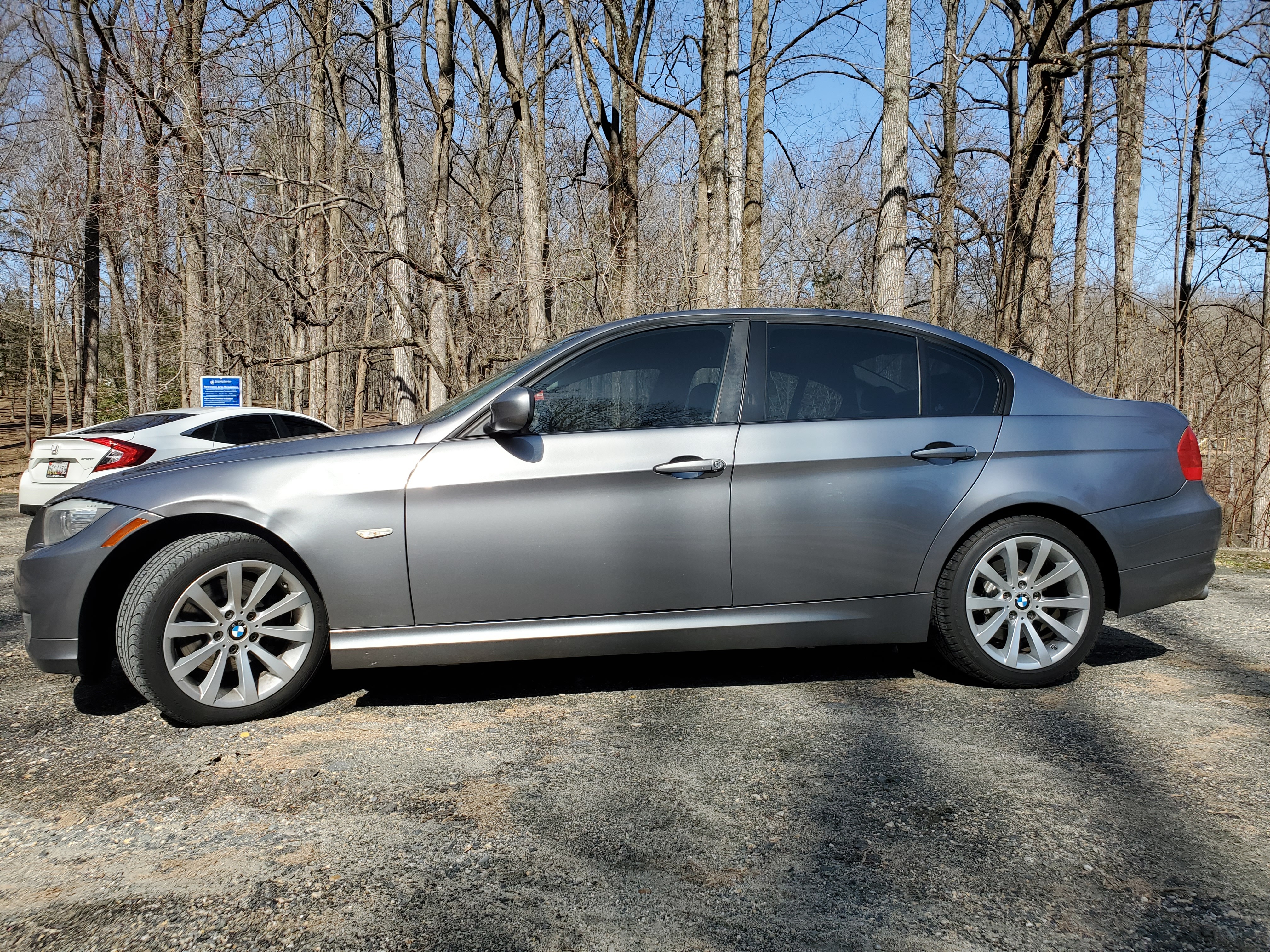

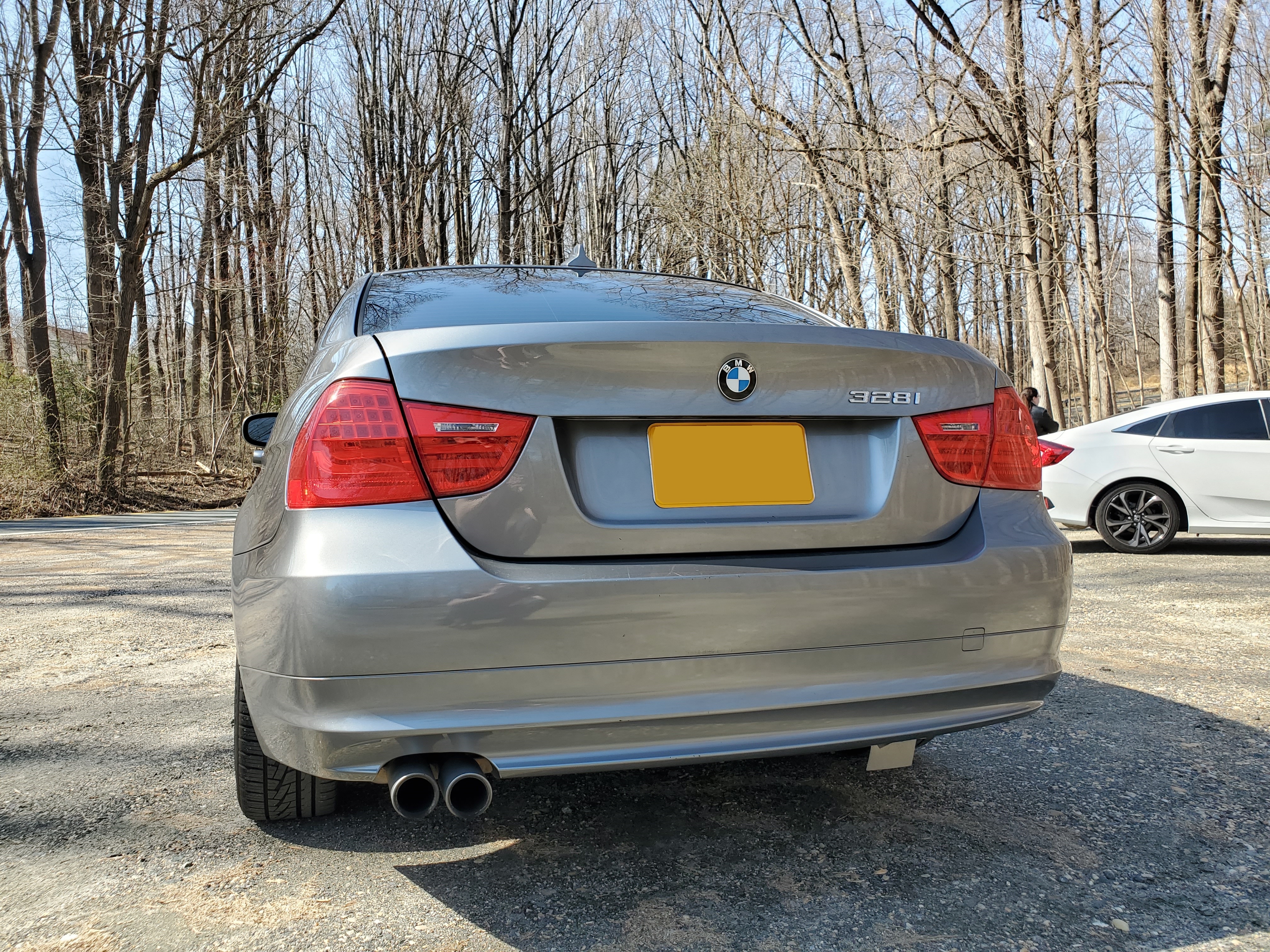
The driving experience of course begins with the user interface, the driver-machine connection. The steering wheel itself is nothing special, bearing no paddle shifters, no special race grips or particularly luxurious leather, but the steering feel is remarkable. Steering effort at low speed is significant, but road feedback is nothing short of excellent, and the driver feels in touch with the front wheels at all times. As a luxury car, though, this does feel a little dated: Modern cars all unilaterally come with speed-sensitive electric power steering that gives effortless low-speed steering, yet enables more precise inputs at higher speeds. The 328i eschews this entirely, instead opting to provide the driver with greater feel and feedback, at the obvious cost of driver effort. The suspension is similarly responsive: The vibration and roughness isolation is impressive, but road irregularities are communicated well, and the suspension feels planted and competent at all times. The car never feels like it struggles for grip, nor does it ever feel as though the suspension has been outsmarted by the road, with the exception of deteriorated road surfaces: Though good roads and okay roads are handled well by the suspension, potholes are quite punishing, and the car simply does not feel at home on rough or poorly-maintained roads. Given the deteriorating state of American infrastructure, this isn't necessarily very promising. However, any deficiency in comfort is made up for in spades by snappy, responsive, confident handling: Turn-in to corners is direct, and the car never loses composure through tight bends. Body roll is minimal, and grip plentiful. Simply put, the 328i can handle literally any road thrown at it, at least at reasonable speeds. Taking the Tail of the Dragon at 50 mph might be pushing it, though. Guiding the car through these bends are a twin control arm MacPherson strut system in front and a five-link independent multilink system in the rear, and both perform excellently, even under hard and sudden maneuvers.
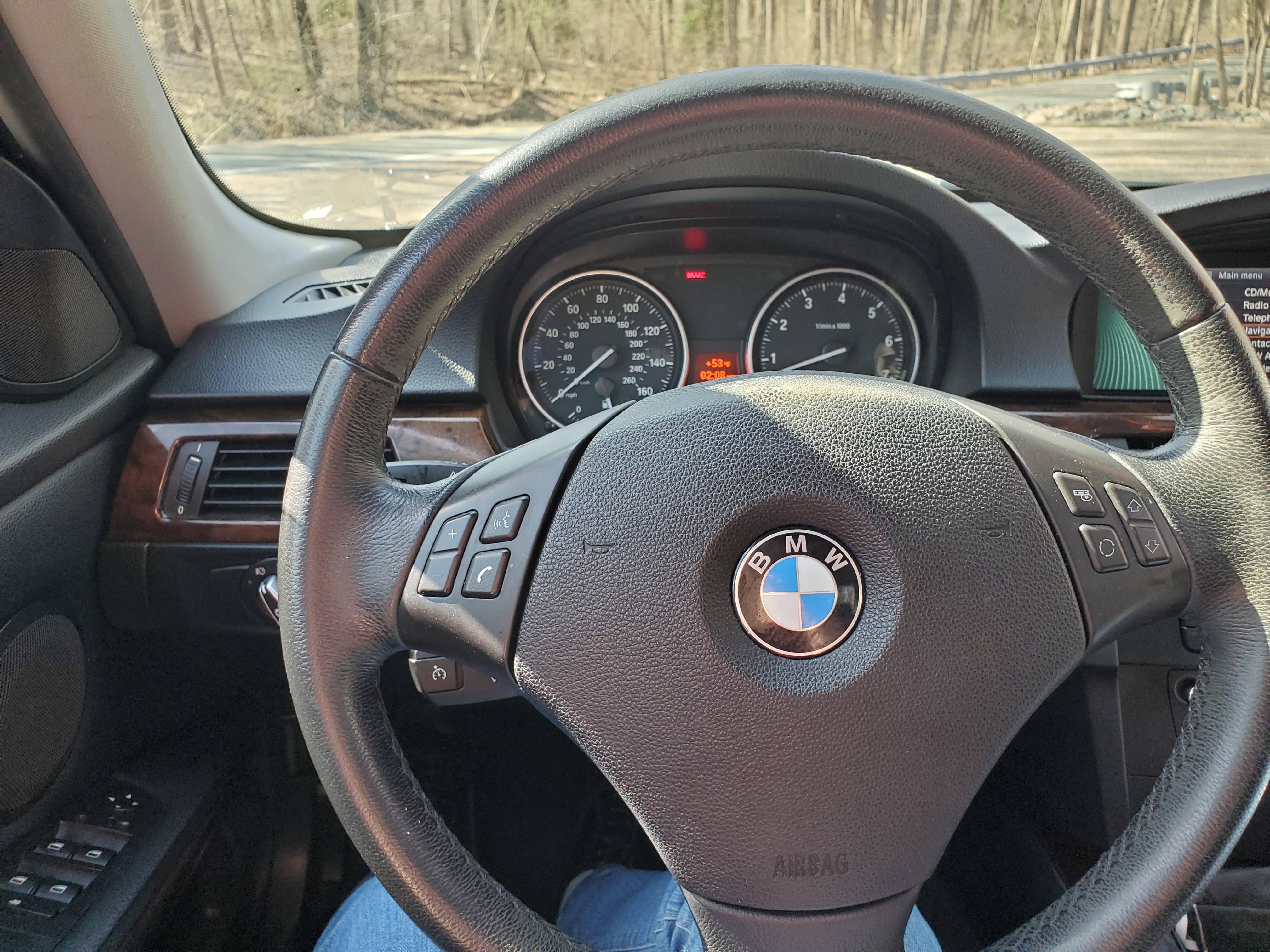
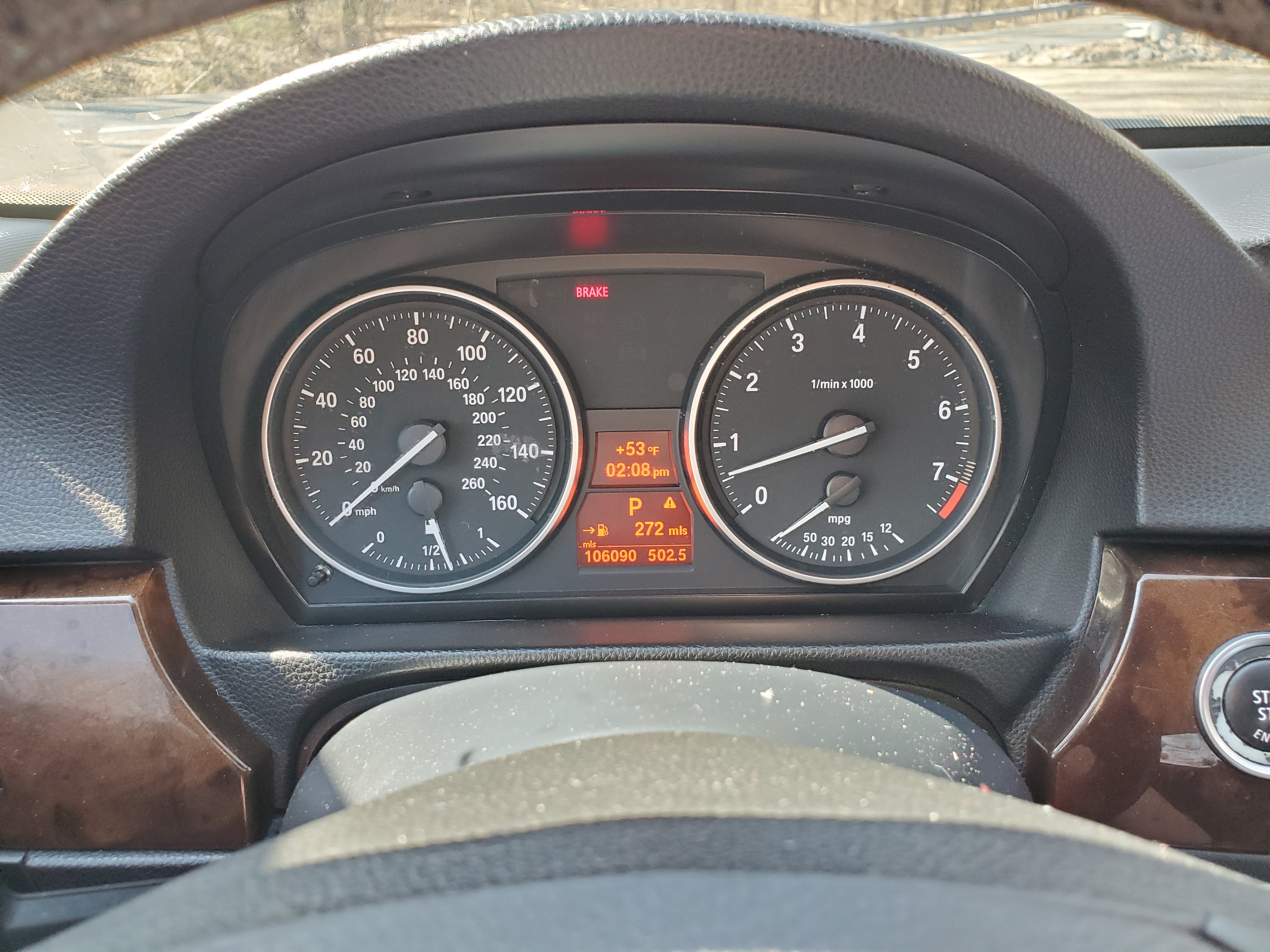
The driver's cornering confidence is enhanced with powerful, responsive brakes, as well as a remarkable powertrain. The 3.0 liter straight six produces a healthy 230 horsepower and 200 pound-feet of torque, and revs freely and happily all the way out to redline, even with the six-speed automatic transmission. The engine's grunt, though seemingly paltry in comparison to the higher-trim engines available in most midsize family cars these days, is still more than enough to have fun with: Though the throttle response feels odd at low speeds, above about 20 miles per hour, the power delivery is linear with pedal pressure, and demanded power is delivered almost immediately. That fun is enhanced by a very well tuned automatic gearbox, which shifts quickly and confidently, prioritizing driving feel over absolute passenger comfort, and with the engine's torque, the transmission never hunts for gears. The driver also has the selection of a sport mode, as well as a manumatic mode, both of which are improvements to an already fun transmission. These days, the absence of multiple shift policies definitely feels archaic, however; lots of cars, particularly in the sport, luxury, and executive segments, offer not only a sport mode, but also economy modes, and even "sport plus" or "race" modes. In the 328i, if you want "economy" or "race," then shift it yourself. The 3 Series does have traction control to rein this in, however: The completely non-intuitive and symbol-free "DTC" button (positioned an inch above the HVAC controls? Really?) allows the driver to alter the stability control behavior in order to allow wheel slip for things like drifting.
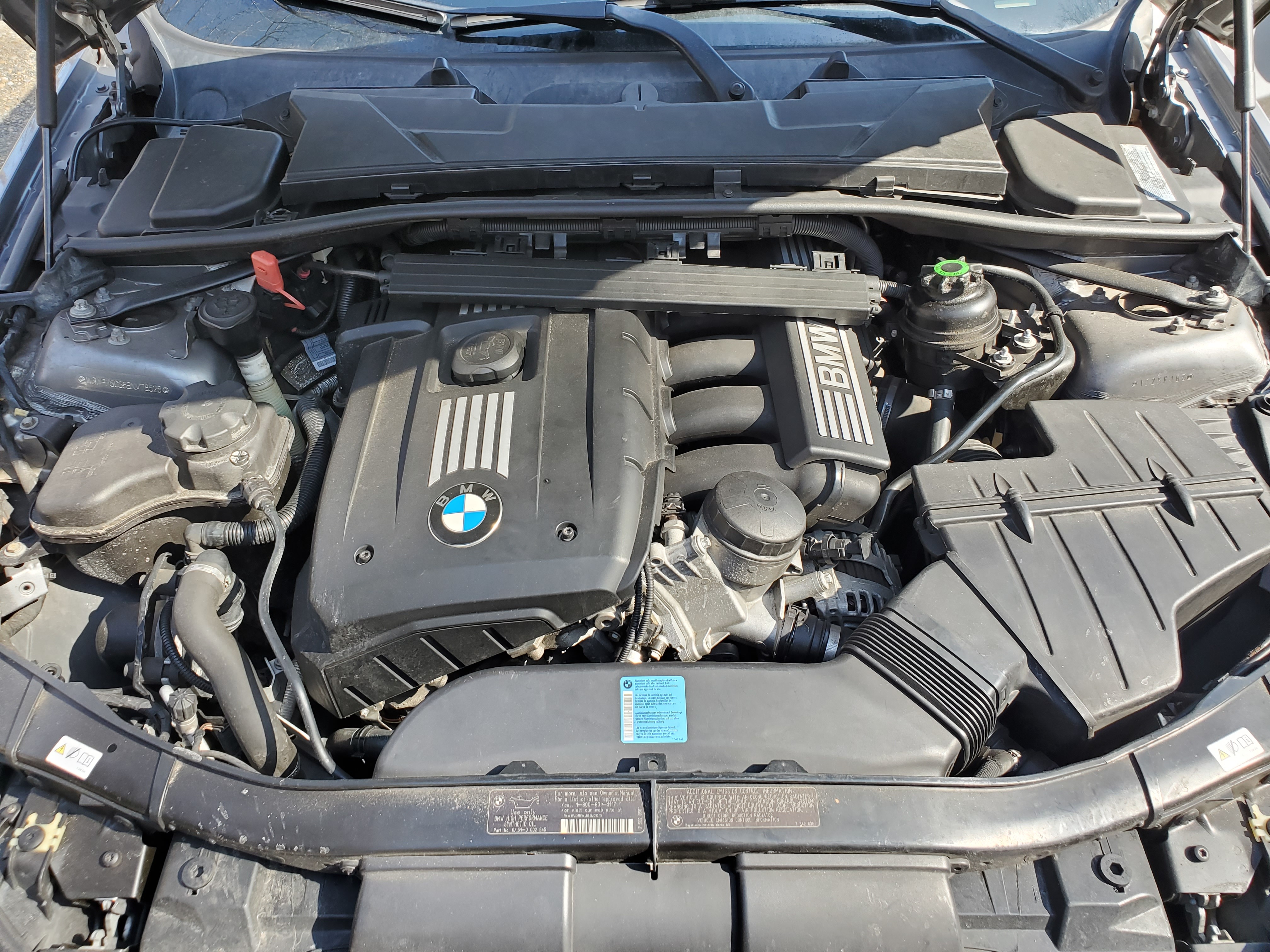

Apart from the traction control, the only major driver assistance feature afforded by this vehicle is the cruise control, though adaptive cruise control could be had as an option for a checkbook-searing 2,400 dollars. However, the 328i doesn't feel like it needs it, nor does it really demand a backup camera, blind spot warning, or any other driver assistance features that are now so in vogue; the responsive driving dynamics, good all-around visibility, and quiet, ergonomic cabin all reduce driver stress. In short, the 328i seems to prioritize the driver-vehicle dialogue, that user interaction, above most other aspects of vehicle design. Comfort, practicality, even affordability (the 3.0 six drinks premium, and a lot of it), have all been compromised on in order to achieve this combination of performance parameters. Ultimately, the 328i rewards precise, careful driving. The sensitive, responsive steering, the eager engine, the direct handling and communicative suspension, all of it adds up to a user experience that feels designed for drivers who not only care about driving, but try to perfect their ability to do it.
What's being sold?
I found it rather difficult to identify what precisely is being sold by the 3 Series. What is the thesis, the message, that the owner buys into? What is this car saying? Why should a luxury car be simultaneously so capable and so sensitive, so reactive to the driver? Is it not enough to have a fast, yet cushy sports sedan like the Dodge Charger? Consider that the performance of the 328i is well above what can be achieved on most roads apart from the open interstate: The car has no problems pelting down bumpy, twisty country roads; on the contrary, it feels quite eager to do so. Higher in the revs, the engine truly comes into its own, and the snappy shifts and direct steering make the driver feel truly in tune with the car. I found myself unable to reach the limits of this car's performance, and I suspect I would need access to a track to actually do so. So, if the car's limits of performance, in a practical sense, are not determined by its technical limitations, then what are they determined by? Well, the other element in this equation: The driver. The 328i's performance extends exactly as far as the driver's does. A tentative driver, a less confident or less enthusiastic driver, will see the 3 Series as effectively little more than a well-built and comfortable, but otherwise generally normal sedan. An enthusiast, however, will see far more: They will see a Sports Sedan, with capital S's. What does this say, though? What are we being told, by driving a car that matches us exactly, move for move? Perhaps the message is one of self-determination: The driver's limits truly are self-imposed, not constrained by machinery, not in a practical sense. Your limits, the absolute farthest extent of your achievements, are a direct function of your skill, your willpower, nothing more. There is no refuge in an underpowered engine, a front end that dives and understeers, a jumpy suspension that hops and judders over bumps, losing traction and precious seconds. The 328i offers no refuge to the driver except their own spirit. Don't ask what the car's capabilities are. Ask yourself what yours are.
Throughout the history of motoring, the message of self-determination shows up quite frequently. The ability to determine one's course and speed to travel has been endlessly romanticized, not just by car culture, but by consumer culture at large: Even now, cars are sold by showing smiling drivers gliding through sweeping, empty roads, limited only by their creativity, not held back by speed limits, or pedestrians, or bicyclists. The message of self-determination is practically inseparable from modern car culture. So then, it perhaps can be argued that driving means self-determination. In that case, perhaps the 3 Series is the Ultimate Driving Machine, because it exemplifies that thesis, that message: Your ability to traverse the world, to control your fate, to go ripping down roads at speeds unheard of by our ancestors, all of that is determined by you and enabled and reified by your car. That's the driver-vehicle dialogue. That's the driving experience: To decide, with your intellect and willpower, with your right foot and clenched fists, what your future holds.
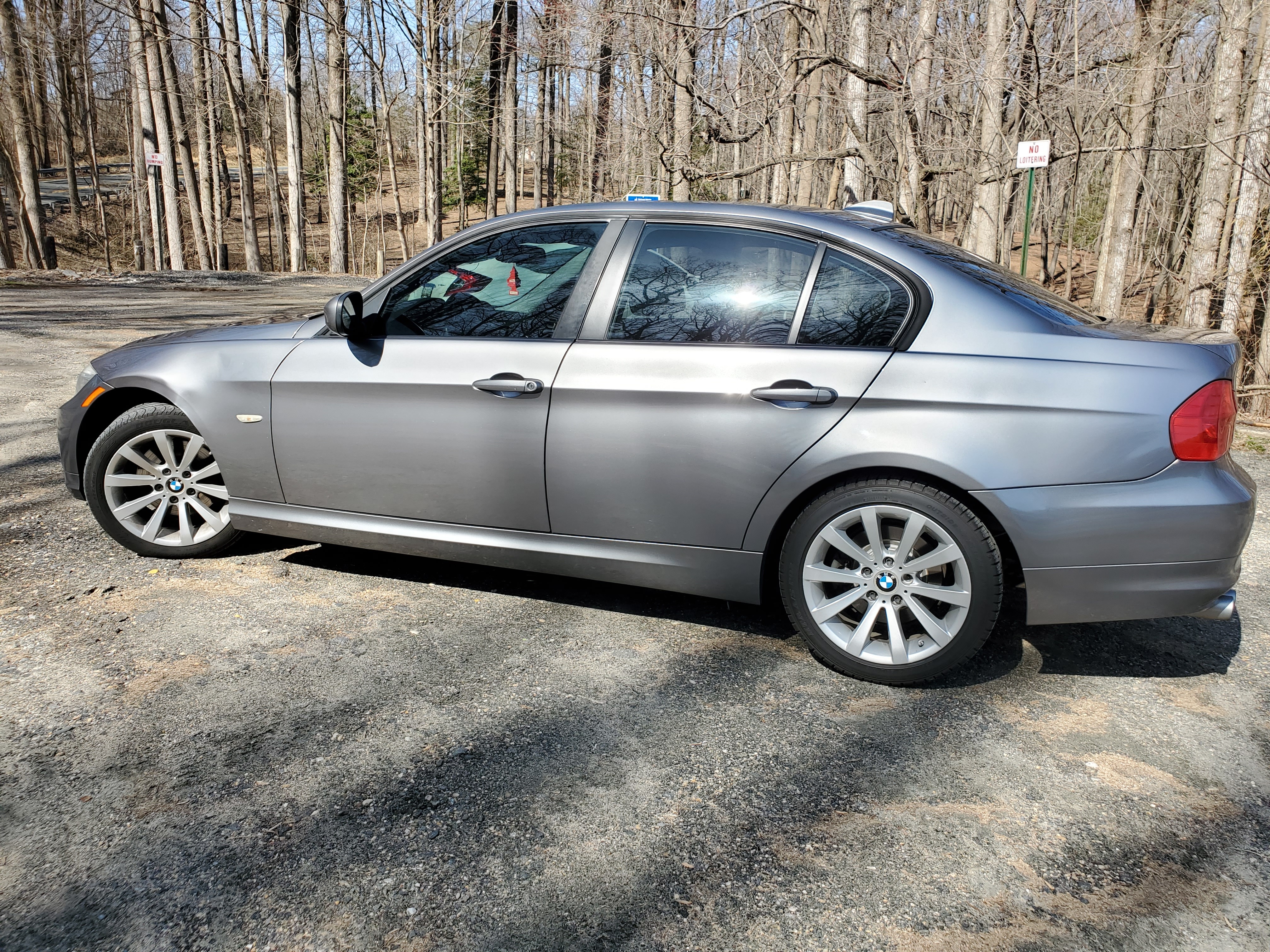
But those car ads aren't really realistic, are they? Those sweeping roads, those empty city streets, those are a fantasy, constructed to show the car in its perfect environment, in a vacuum where transportation policy, urban design, public health, all those aspects of modern civilization that are so inseparably tied with transportation policy and automotive policy, are hidden. Instead, you see a terrarium, an automotive Westworld, where the fantasy that justifies the car, sells the car. In reality, cars sit in traffic, hit and kill bicyclists, burn gas, and oversteer into ditches. So is that libertarian fantasy of self-determination really achievable? The fact of the matter is that this cannot be the only definition of driving. For many, driving is a means to an end, just another arm of transportation policy. For others, driving is an act of travel, not of self-determination: For them, the interaction with the car fades in importance compared to the importance of the trip itself, of the experience. Therefore, the 3 Series can only truly appeal to those who have already on some level accepted that definition of driving. No one of these definitions necessarily precludes the other, and surely all three can be present at the same time, or independently. Therefore, that's the true limit of the 328i: Not its automotive performance, but its existence as a driving machine. Sometimes you don't need self-determination. Sometimes you don't need willpower, the thrill of having your life in your hands and doing something beautiful and exhilarating with it. Sometimes driving is routine, is banal, is something you can't wait to finish. That's not self-determination. Sitting in city traffic, driving around the block for a parking space, burning gas just to get groceries, that's not self-determination. That's public policy. That's urban design. That's public life. Cars exist both as an aspect of modern infrastructure and as personal objects, and when it comes to the former, maybe the 3 Series just isn't quite at home.
I rented this car with Turo, a crowdsourced car rental platform.